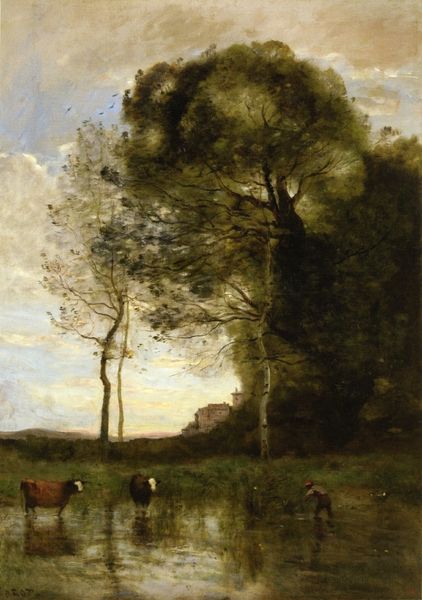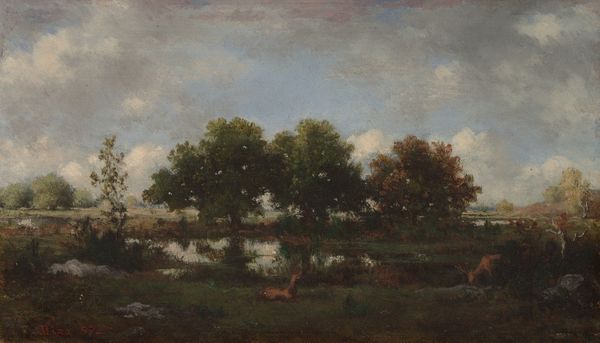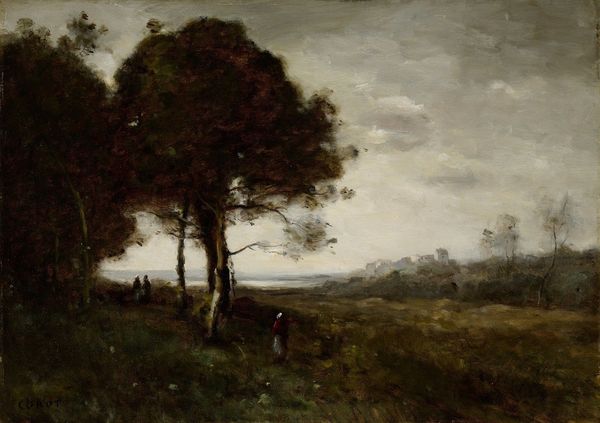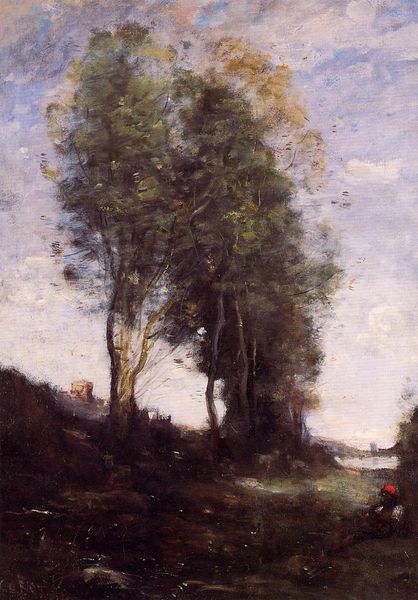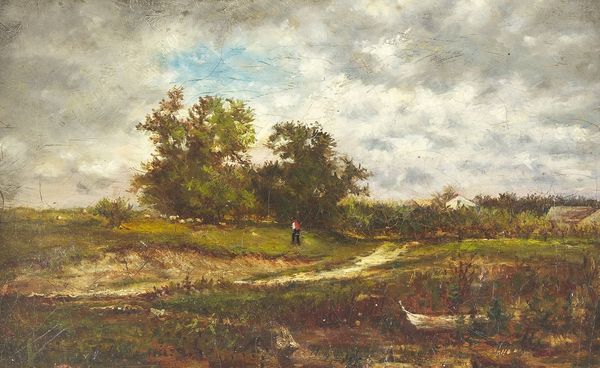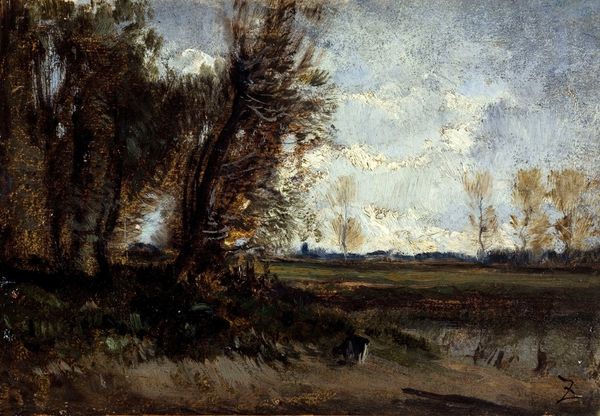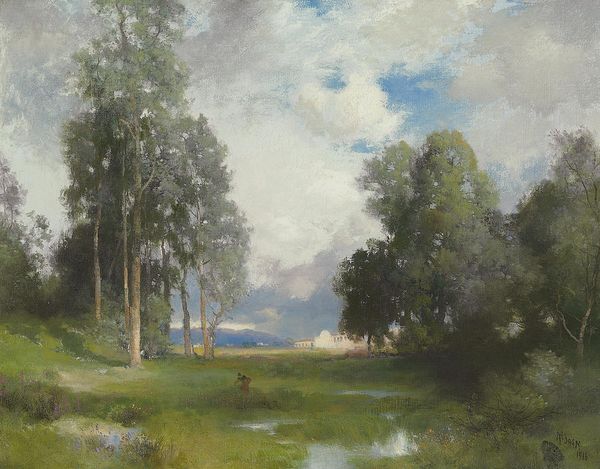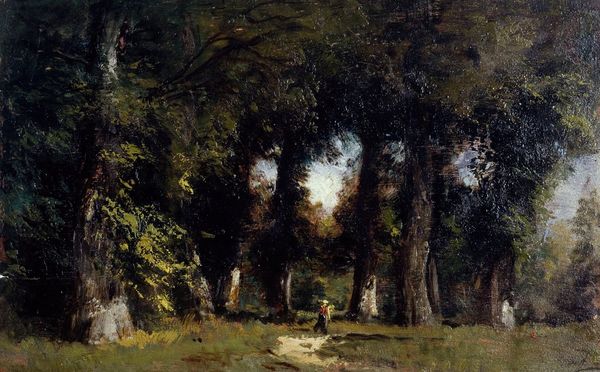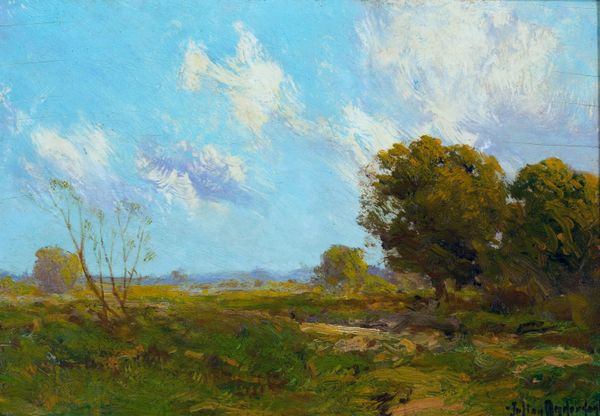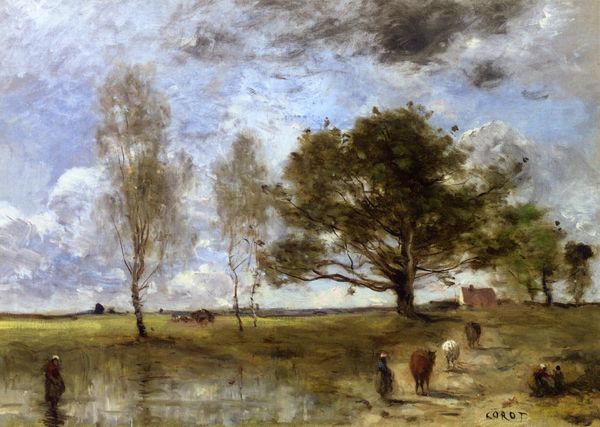
painting, plein-air, oil-paint
#
tree
#
sky
#
painting
#
impressionism
#
plein-air
#
oil-paint
#
landscape
#
impressionist landscape
#
figuration
#
oil painting
#
romanticism
#
water
#
painting painterly
Copyright: Public domain
Jules Dupré's "Small Floodplain" invites us into a landscape deeply rooted in 19th-century French art. Dupré, born in 1811, lived through the turbulence of post-revolutionary France. His art emerged during a period of rapid industrialization and urbanization when artists began to re-evaluate humanity’s relationship with nature. Here, nature is not just a backdrop but the main event. Consider the small figure in red; they seem almost absorbed into the landscape. What does it mean to be a human in relation to the overwhelming force of nature? Is the painting offering a kind of romantic solace, a place to escape the pressures of a changing society? Dupré’s paintings allowed viewers to reflect on their place in the world. This wasn't just landscape painting; it was a cultural statement, a kind of longing for a simpler, perhaps idealized, past. How does the emotional depth of this seemingly simple landscape resonate with your own sense of place and belonging?
Comments
No comments
Be the first to comment and join the conversation on the ultimate creative platform.

